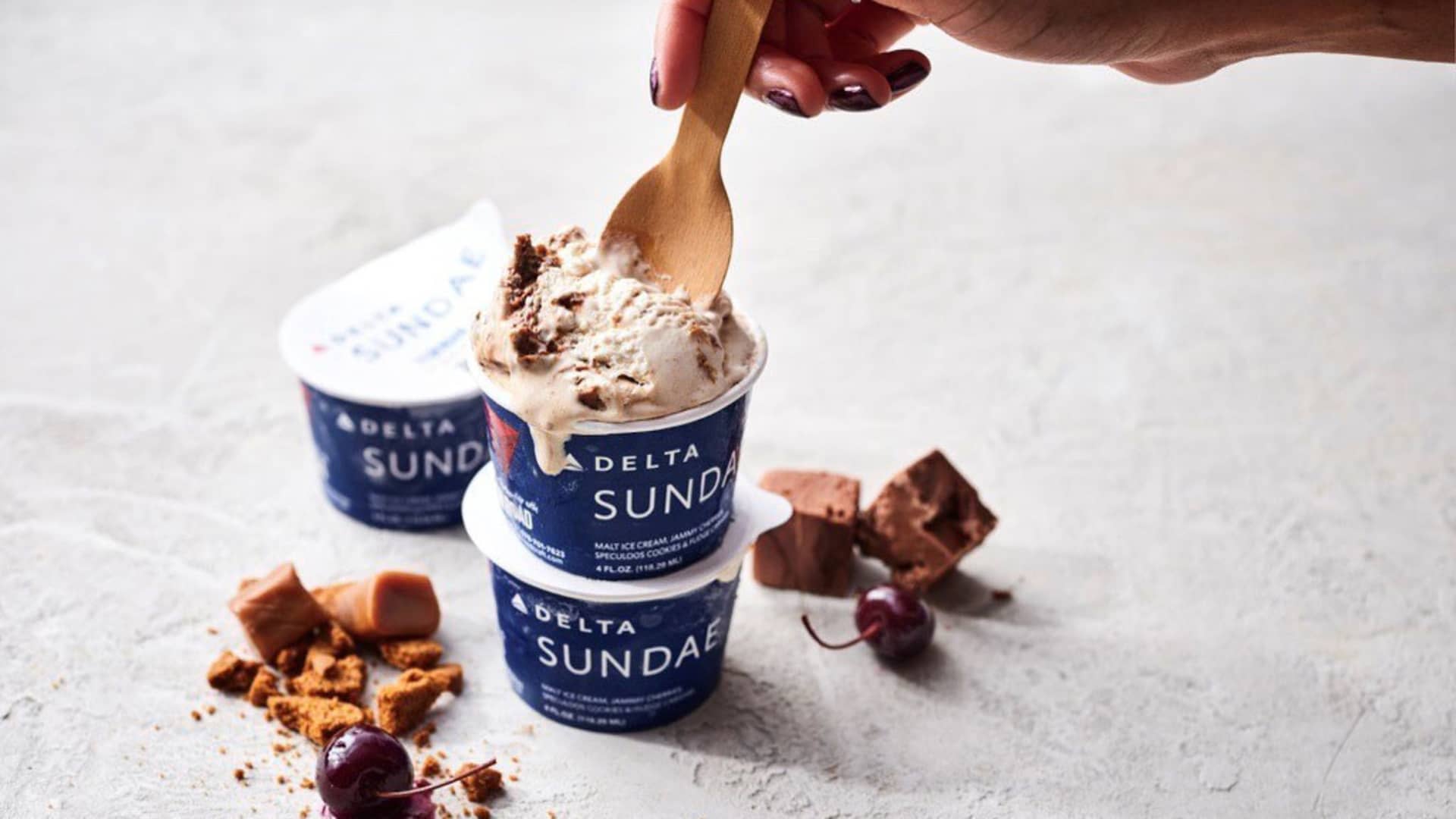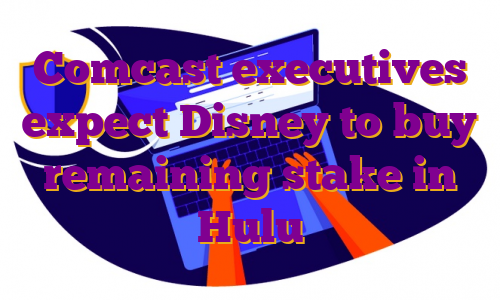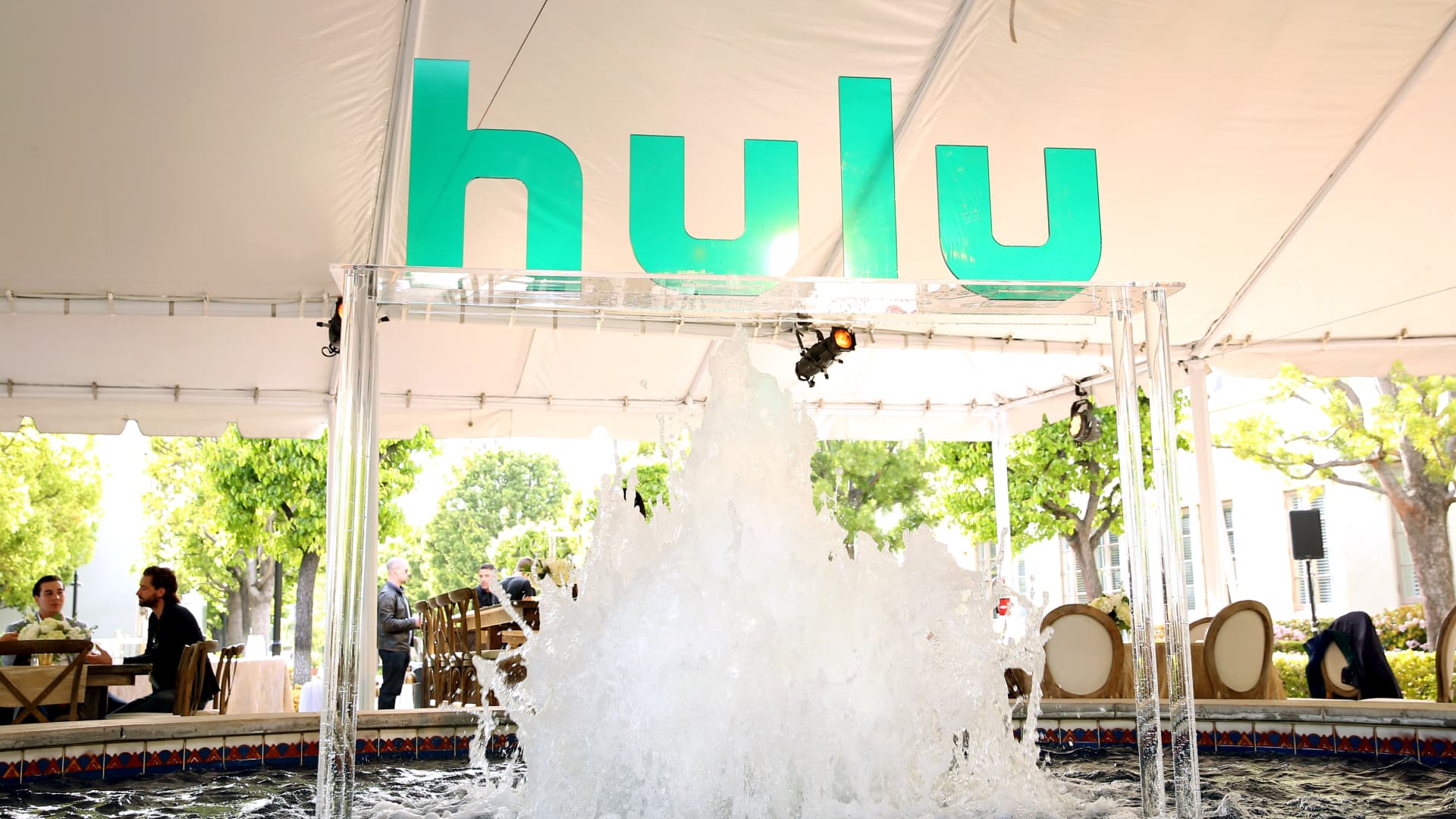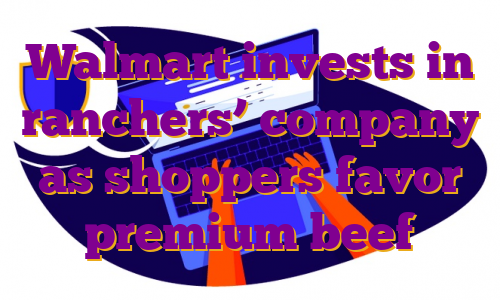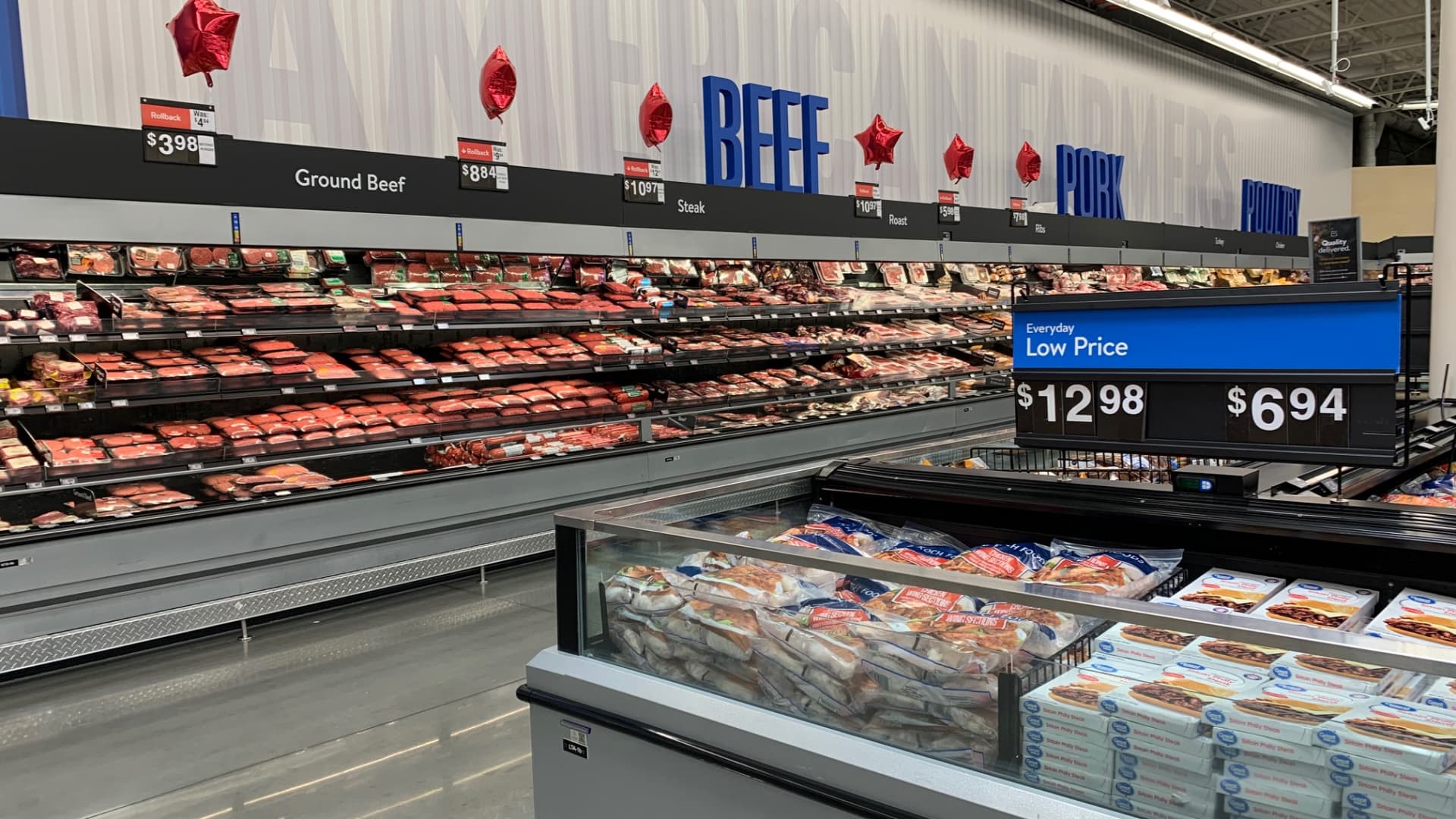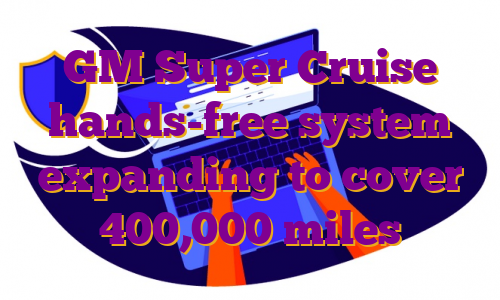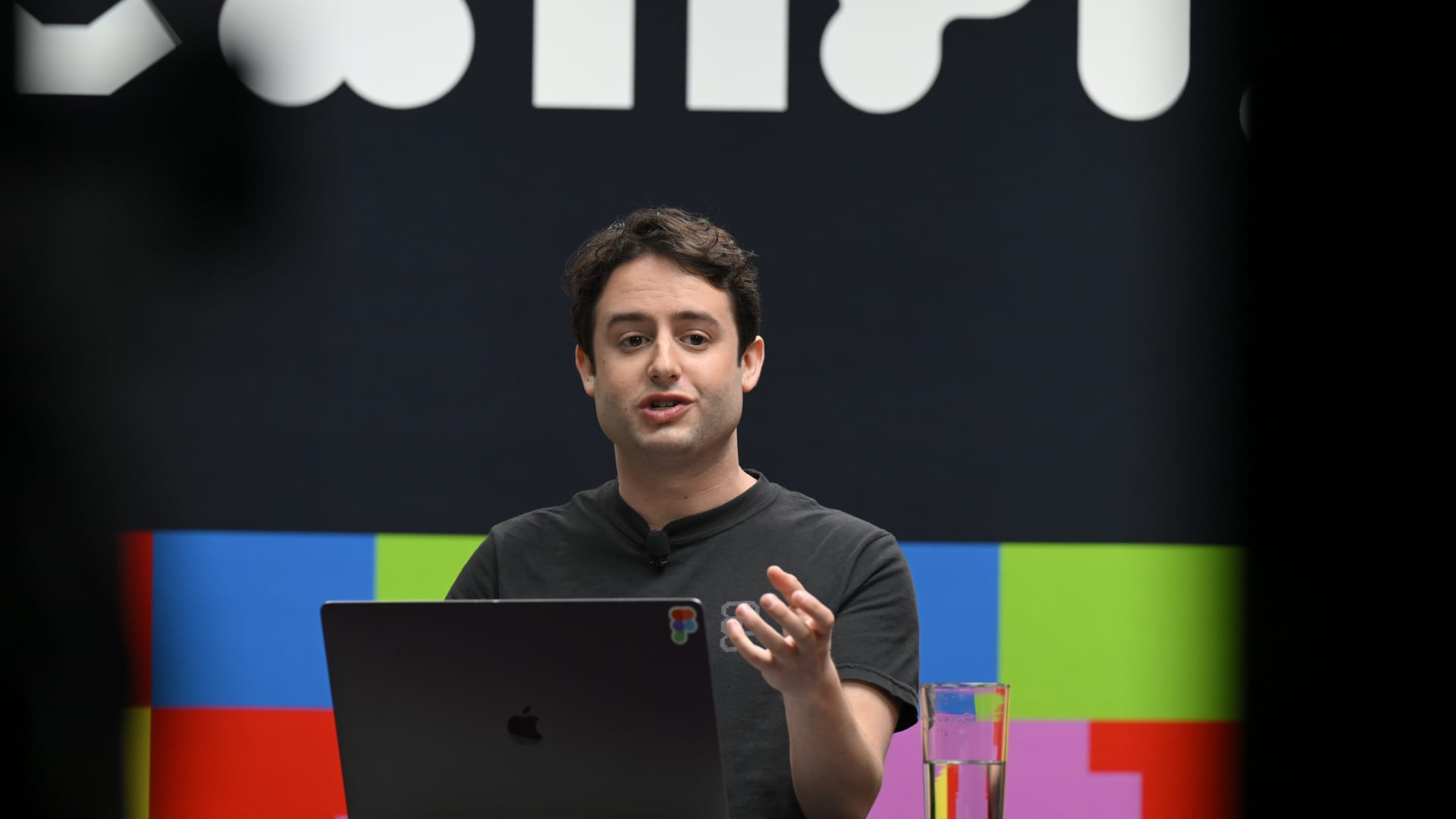Courtesy: Singapore AirlinesThe aromas of airplane food are once again wafting through cabins at 35,000 feet.From vegan meatballs to ice cream sundaes, airlines are offering new options and old favorites to woo returning travelers. As the peak travel season fades and inflation weighs on household and company budgets, it’s even more important than usual for airlines to court passengers.Airplane food, a favorite travel punchline for comedians, is hardly the top reason why travelers choose a carrier — price and schedule are much stronger factors. But it can be a creature comfort on board and can go a long way toward winning over passengers, especially those who are willing to pay up for premium seats, analysts say.”Food is one of the most tangible signals of what an airline thinks of its customers,” said Henry Harteveldt, founder of travel consulting firm Atmosphere Research Group and a former airline executive.The start of the Covid-19 pandemic halted almost all food and beverage service on flights as travel collapsed and airlines limited crews’ contact with passengers to avoid spreading the virus. The pandemic drove airlines to record losses and had them looking to cut costs wherever possible, such as in-flight food.With travel returning, airlines around the world are rolling out new menu options. Alcohol sales, with some new ready-to-drink options, are back on board in U.S. coach cabins. And face masks are now mostly optional, removing an obstacle to onboard food and beverage service.As tastes change and airlines face supply chain challenges, the meal on your seat-back tray table is making a comeback — with some adjustments.Chasing high-paying travelersBetter in-flight menus can boost a carrier’s image and help it bring more high-paying travelers on board. First- and business-class customers are becoming even more of a prize as airlines try to recover from the pandemic’s financial impact.Because of “the incentive to win those premium class passengers, the incentive to spend more money [on food] is high,” said Steve Walsh, partner at management consulting firm Oliver Wyman in its transportation and services practice.Still, food and beverage costs make up just about 3% of a full-service airline’s expenses, he estimated.Courtesy: Singapore Airlines | American AirlinesWhile food is for sale in many domestic coach cabins and is generally complimentary on long-haul international flights, many of the new offerings target those in premium classes, where there are fewer passengers and service is more elaborate.A plethora of videos have been posted online by airline passengers reviewing meals, plating and service in detail. Popular staples such as Biscoff cookies and Stroopwaffel treats garner loyal followings and come to be expected by many travelers. Missteps on the menu or service are amplified on social media by disappointed travelers.One offering: Delta is serving passengers on long-haul international flights a new sundae-in-a-cup premixed with chocolate, cherries and spiced Belgian cookies called speculoos, which are known in North America as Biscoff cookies.”Obviously it is an homage to the Biscoff,” said Mike Henny, Deltas’ managing director of onboard services operations.In more premium cabins, such as Delta One on international flights, passengers can build their own sundaes with a choice of toppings, including Morello cherry compote, chocolate sauce and speculoos cookie crumbles.Ice cream on Delta Air LinesSource: Delta Air LinesDelta in July said the revenue recovery in premium products and its extra-legroom seats was outpacing sales from standard coach — further motivation to introduce new and exciting food items.Last week, the airline said it is teaming up with James Beard Award winner Mashama Bailey, executive chef of Savannah, Georgia-based restaurant The Grey, for “Southern-inspired” meals on flights out of Atlanta for domestic first-class passengers. Travelers on Delta One flying internationally out of the hub can also preorder menu items curated by Bailey.Airlines for years have teamed up with celebrity chefs to design their menus and lately have been working more with local businesses. In February, American Airlines brought Tamara Turner’s Silver Spoon Desserts’ Bundt cakes on board domestic premium cabins.Veggie and veganEven before the pandemic, airlines were expanding options for travelers who prefer vegetarian and vegan meals. Now, those types of alternative dishes are getting an even closer look.”Pasta isn’t always the solution,” said Delta’s Henny.Singapore Airlines, a carrier that operates some of the world’s longest flights, brought in Southern California-based luxury spa Golden Door to develop dozens of recipes for its in-flight menu. Golden Door’s executive chef, Greg Frey Jr., focuses on vegetable-forward dishes that he says are among the best for digestion on flights.”I think people are, rightly so, concerned they’re not going to feel as satiated with this vegetarian meal and [think] ‘I just need this piece of meat.’ And in the end … you really don’t need that much protein when you’re sitting in an airplane and relaxing,” he said. “It’s not like you’re heavy lifting.”An hour later, you’re not going, ‘Ugh, I wish I didn’t have the meatballs.'”Greg Frey Jr.executive chef at Golden DoorFrey developed a Portobello mushroom “meat ball” dish that’s served with a dairy-free risotto made with vegetable broth. The mushroom balls are steamed and served with an heirloom tomato sauce: “There’s not a lick of meat in there,” he said.”It’s so satisfying and you get all those umami flavors,” he said. “The best part is an hour later, you’re not going, ‘Ugh, I wish I didn’t have the meatballs.'”Supply chain puzzleGreens and salads are among the most difficult dishes to serve on board. Airline chefs have to make sure ingredients are hardy enough to endure transportation and refrigeration, making stronger greens such as kale a better option than some more delicate varieties.”We have to be very choosy about what type of greens we offer,” said American Airlines spokeswoman Leah Rubertino. “Arugula, for example, is not our friend.”The airline is offering salads on more flights compared with before the pandemic, Rubertino said.The airline is also now offering a “fiesta grain bowl” with rice, quinoa, black beans, cauliflower, corn and zucchini as a vegetarian option in many first-class cabins for domestic flights.Airlines have been trying to source vegetables more locally, giving their catering companies fresher ingredients and cutting down on transportation time and costs. Singapore Airlines since 2019 has been using greens from AeroFarms, a vertical farm near Newark Liberty International Airport in New Jersey. Spokesman James Boyd said the airline has plans to source from other vertical farms close to the major airports it serves in the coming years.Vertical farm at Aerofarms in New JerseyLeslie Josephs | CNBCOnce the ingredients are sourced, there’s the challenge of serving meals for thousands of passengers — made only more difficult by broad supply-chain and labor shortages and delicate ingredients.Airlines have struggled to staff in a tight labor market, as have airport catering kitchens and other suppliers.”There’s not a day that goes by where we don’t have issues with provisioning our aircraft with pillows, blankets, plastic cups, food,” American Airlines CEO Robert Isom said on a quarterly call in July.Delta’s Henny said the carrier phased food back gradually to ease strains on service.”We knew we couldn’t just flip a switch,” he said. “We had to be very creative at the height of the pandemic.”As food service expands, airlines are encouraging travelers to order their meals ahead of time so the carriers know what to load on the plane, whether it’s a special meal for religious or other dietary restrictions or just their favorite dishes in first class.Meanwhile, some flight attendants still have to make do with what’s on board.Susannah Carr, a flight attendant at a major airline and a member of the Association of Flight Attendants union, told CNBC that if the crew doesn’t have a vegetarian meal on board for a premium-class passenger, “We might pull some additional salad and make them a bigger salad” and incorporate a cheese plate.”We’ve definitely gotten good at ‘McGyvering,'” she said. .
Comcast executives expect Disney to buy remaining stake in Hulu
HuluRafael Henrique | SOPA Images | LightRocket | Getty ImagesThe future of Hulu continues to be an open question as Comcast and Disney still haven’t agreed on terms that will settle the company’s future ownership.But Comcast executives are planning on Disney buying them out — even if they’d prefer otherwise.related investing news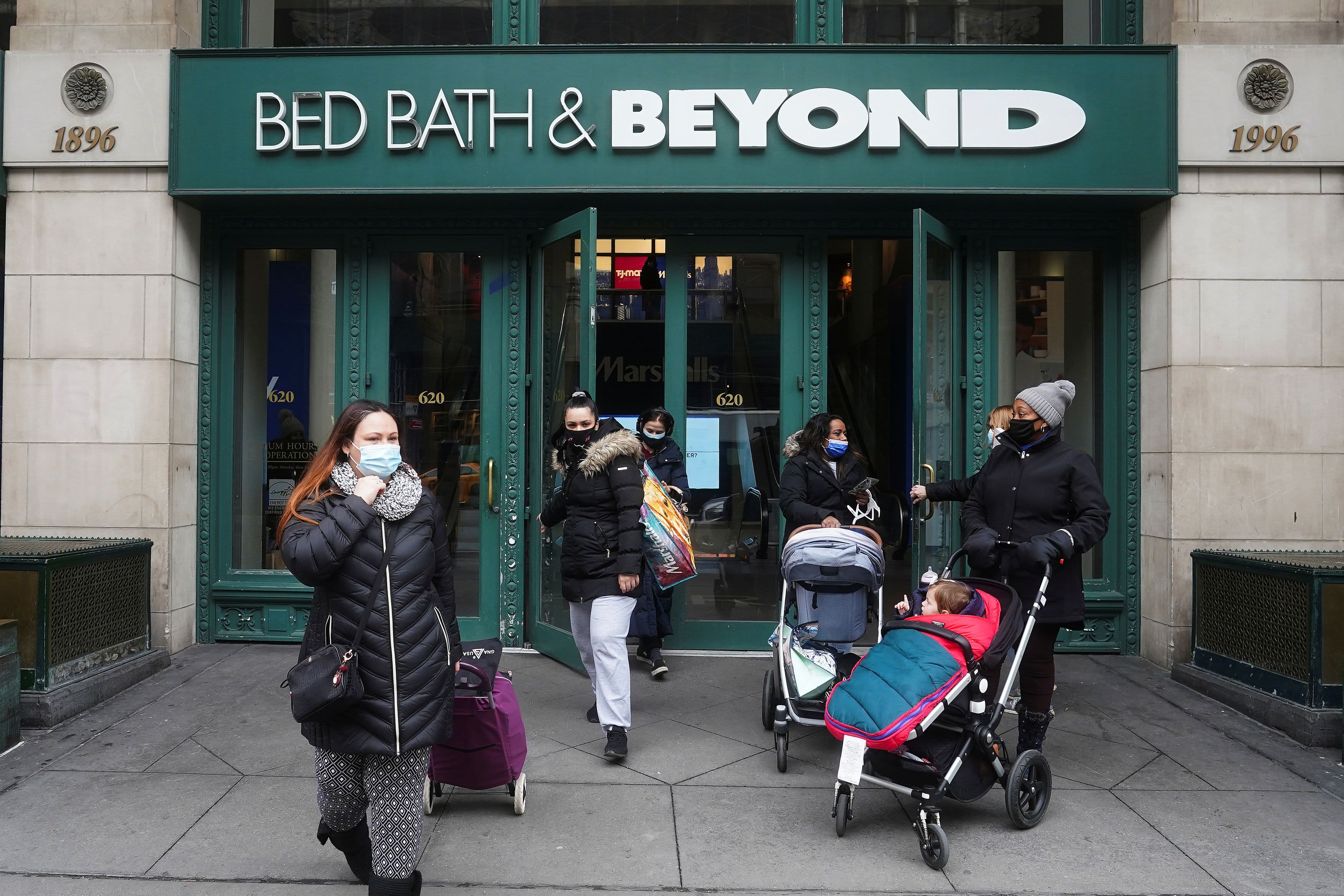
Bed Bath & Beyond’s turnaround is not enough to fix the struggling business, analysts sayDisney owns two-thirds of Hulu and has an option to buy the remaining 33% from Comcast as early as January 2024. Some analysts and industry watchers have speculated Comcast might try to buy Hulu from Disney rather than the other way around. Comcast Chief Executive Brian Roberts has been a long-time believer in Hulu and has historically pushed to keep the asset rather than sell, including in 2013, when Roberts nixed talks with DirecTV, according to people familiar with the matter.Comcast broached the idea of buying all of Hulu from Disney after Disney agreed to acquire the majority of Fox’s assets as part of a $71 billion deal that closed in early 2019, said two of the people, who asked not to be named because the discussions were private. Disney, armed with 66% ownership after acquiring Fox’s minority stake in Hulu, dismissed the idea, the people said.Blocked from buying all of Hulu, Comcast’s sustained belief in the business led to the unusual agreement the two companies reached in May 2019, with Comcast agreeing to sell Disney its minority stake as early as 2024. As part of that transaction, Disney guaranteed a sale price valuing Hulu at a minimum of $27.5 billion.That amount spiked earlier in the pandemic, giving Comcast some hope that Disney may choose to unload Hulu rather than pay Comcast a huge check for the remainder, two of the people said. Offloading Hulu would have allowed Disney to put its focus and money primarily on Disney+.”I think if Disney could roll back the clock today, I’m not so sure they would enter into that deal,” said Neil Begley, an analyst for Moody’s Investors Services. “Disney has this huge bill to pay in 2024 at a time when they’re already investing a lot of money into Disney+.”Acquiring Hulu from Disney would also supercharge Comcast’s streaming efforts. Hulu would instantly become Comcast’s flagship streaming asset, replacing NBCUniversal’s Peacock, which has added just 13 million paid subscribers in its nearly two years of existence. Hulu has 46.2 million subscribers. Peacock could live on as NBCUniversal’s free advertising-supported option. Peacock already has a free tier, with millions of users.Several top Comcast executives also think Hulu doesn’t make as much sense paired with Disney’s assets as it would at NBCUniversal, especially with the recent announcement that Disney+ plans to launch an advertising-supported tier in December, according to people familiar with the matter. Hulu has been Disney’s advertising-supported service for years. Disney could have positioned Hulu as its advertising play going forward, but CEO Bob Chapek has chosen to make versions of both Disney+ and Hulu with and without commercials.Spokespeople for Disney and Comcast declined to comment.Bob Chapek, CEO of the Walt Disney Company and former head of Walt Disney Parks and Experiences, speaks during a media preview of the D23 Expo 2019 in Anaheim, California, Aug. 22, 2019.Patrick T. Fallon | Bloomberg via Getty ImagesWhy Disney wants HuluNetflix’s slowing growth this year has led to an overall devaluation in the streaming sector. Comcast executives value Hulu “significantly higher” than $27.5 billion, and possibly up to $50 billion, one of the people said. That’s down from around $60 billion during the pandemic, the person said. If Disney sticks to its plan to buy out Comcast by January 2024, there’s still time for significant valuation fluctuations.Disney’s decision to lower Disney+’s 2024 guidance and its subsequent move to raise prices signaled to Wall Street that Chapek is no longer focused on adding subscribers at all costs.It’s sent a signal to Comcast that Hulu is likely in Disney’s long-term plans. Excluding Hulu with Live TV, Hulu’s average revenue per user is $12.92 per month. That’s nearly triple Disney+’s global ARPU of $4.35 and more than double Disney+’s ARPU in the U.S. and Canada ($6.27).Disney has built a streaming strategy around bundling Disney+, Hulu and ESPN+. While Disney raised Disney+’s price by 38% and ESPN+’s price by 43%, it only bumped its bundled offering of Disney+, Hulu (with ads) and ESPN+ by $1, from $13.99 to $14.99. That suggests Disney’s most preferred option is customers pay for the entire bundle, including Hulu.Media and entertainment companies have begun focusing on building profitable subscribers, rather than simply acquiring subscribers, in recent months as industrywide streaming growth has slowed. If Disney isn’t trading on Disney+ growth, Hulu becomes a more important part of its long-term strategy.”People are getting more judicious about their spend,” Kevin Mayer, Disney’s former head of streaming, said on CNBC last month. “There’s a renewed emphasis from Wall Street not just on the topline subscriber number but on the bottom line. I think that’s healthy.”Comcast vs. DisneyThere’s also the issue of competitive dynamics. A primary reason Disney held on to Hulu, and acquired other Fox assets, was specifically to keep them from Comcast, according to people familiar with the matter. Handing Hulu to Comcast would alter the balance of power in the media world and weaken Disney, then-CEO Bob Iger thought, the people said.Comcast has already taken steps to weaken Hulu, assuming Disney will keep it. Earlier this year, Comcast made the decision to remove content such as “Saturday Night Live” and “The Voice” from the streaming service and put it on Peacock instead. That change takes place later this month.Comcast has already earmarked some of the proceeds it’ll receive toward paying down debt. Comcast executives say they don’t need the cash and aren’t independently looking to accelerate a timeline, two of the people said.Dan Loeb’s desireDaniel LoebSimon Dawson | Bloomberg | Getty ImagesActivist investor Dan Loeb’s Third Point Capital bought a new stake in Disney last month, arguing Disney should not only complete its deal for Hulu, it should accelerate its timing.”We urge the company to make every attempt to acquire Comcast’s remaining minority stake prior to the contractual deadline in early 2024,” Loeb said in a letter addressed to Chapek. “We believe that it would even be prudent for Disney to pay a modest premium to accelerate the integration but are cognizant that the seller may have an unreasonable price expectation at this time (while noting the seller has already made the decision to prematurely remove their own content from the platform.) We know this is a priority for you and hope there is a deal to be had before Comcast is contractually obligated to do so in about 18 months.”Disney hasn’t publicly addressed the specifics of Loeb’s requests and hasn’t made a decision on whether it plans to speed up a timeline to buy Comcast’s stake in Hulu, according to people familiar with the matter.Disclosure: Comcast is the parent company of NBCUniversal, which owns CNBC.WATCH: Disney membership in the works and could offer exclusive content or experiences
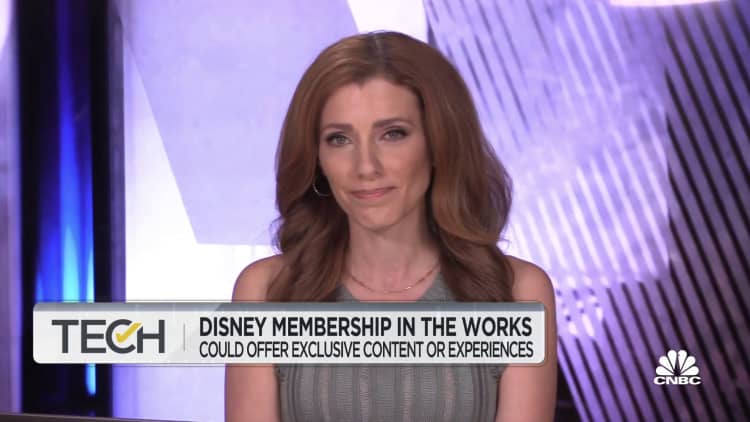 .
.
Walmart invests in ranchers’ company as shoppers favor premium beef
The assortment in Walmart’s beef department has reflected changing consumer preferences, as more of them opt for higher quality cuts of meat.Melissa Repko | CNBCAs more grocery shoppers opt for higher quality meats, Walmart said Wednesday that it is investing in a company led by ranchers and beef producers to bulk up its supply.The retailer is taking a minority stake in Sustainable Beef, which plans to open a processing facility in North Platte, a small town in west-central Nebraska that is home to the former ranch of storied Western showman Buffalo Bill Cody. It expects to break ground next month and create 800 jobs.Walmart declined to disclose the specific amount of its investment. As part of the deal, however, the retailer will get the majority of beef produced at the facility, which is expected to open by late 2024, said Tyler Lehr, senior vice president of merchandising for deli services, meat and seafood for Walmart U.S. It will also get representation on the company’s board.For the retailer, the deal means a larger, more consistent supply of beef, including better cuts. For shoppers, it will show up in the form of ground beef and steaks — including ribeye, sirloin and New York strip — in its meat department. Walmart will source Angus from the company, a type of beef that comes from a cattle breed often associated with more flavor because of its marbling.The beef will hit store shelves in the central part of the country starting in late 2024, Lehr said.A beefed-up grocery strategyWalmart, the country’s largest grocer by revenue, is making investments in agriculture and food production as consumers eat differently and crave more information about the items they toss in their shopping carts. The company invested earlier this year in Plenty, a California-based startup that grows leafy greens indoors and closer to urban centers. The agriculture method of vertical farming uses less water, eliminates the need for pesticides and requires less transportation to get to the store shelf.Two years ago, Walmart opened a beef-processing facility for Angus beef in Thomasville, Ga., and in 2018, it opened a high-tech dairy plant in Fort Wayne, Ind.The Sustainable Beef investment also feeds Walmart’s environmental and social commitments. By 2030, the retailer, along with the company’s foundation, has pledged to protect, restore or more sustainably manage at least 50 million acres of land and 1 million square miles of ocean by 2030. And two years ago, it said it would work toward sourcing more sustainable fresh beef by working with ranchers on grazing management, grain sourcing and more.Groceries drive almost 60% of Walmart’s U.S. sales, according to its most recent annual report. Fresh groceries like fruits, vegetables and meats are especially a growth driver and influence where people choose to shop, Lehr said.”Customers continue to tell us one of the biggest points of differentiation is they want to know where it comes from,” Lehr said. “They like to know and learn a little bit more about it rather than just seeing it on the meat counter. There’s a greater drive and desire for them to know what the backstory is on the products that they’re purchasing in store.”Sizzle and steakDuring the past months of rising inflation, Walmart’s reputation for low prices has attracted middle- and high-income shoppers looking to save on groceries and essentials, including some who may seek premium cuts of meat. In the most recent quarter ended July 31, Walmart said about three-quarters of the company’s market share gains in food came from customers with annual household incomes of $100,000 or more. The discounter cut its full-year profit guidance last month, but increased its projections for sales growth, citing gains in its grocery category.Grocery shoppers, especially younger generations, expect more from their food — even as they watch their budget, said Rob Dongoski, food and agribusiness leader for consulting firm EY. Along with seeking tasty and affordable items, they consider other attributes, such as whether an animal was treated humanely or if produce was grown in a more sustainable way. They may look for labels associated with health or wellness, too, such as “organic,” “grass-fed” or “antibiotic free.”If you look at Gen Zers and millennials, cars and houses are more needs-based and food is more status.Rob Dongoskifood and agribusiness leader, EYAnd, Dongoski said, some of those consumers are willing to pay more for them.”There’s a renewed interest in food,” he said. “Boomers and Gen Xers affiliated status with their car and their house and food was a necessity and needs-based purchase. If you look at Gen Zers and millennials, cars and houses are more needs-based and food is more status. We’ve seen a real difference in that attitude.”Those evolving preferences have changed the look of Walmart’s meat department, too. On a store tour earlier this summer with Walmart’s Chief Merchandising Officer Charles Redfield near the big-box retailer’s Arkansas headquarters, he pointed to fridges full of beef.Inside of the chilled area, there is now a larger number of steaks on black trays versus white ones. The black trays are for choice beef, a higher-quality cut that’s juicier and more flavorful, and the white trays are for select beef, a lower standard of meat that’s less marbled and tender.Three or four years ago about 70% of steaks at stores were in the white trays, he said; now, the mix has flipped. .
GM Super Cruise hands-free system expanding to cover 400,000 miles
That green light means you can take your hands off the wheel. Just keep your eyes on the road!Mack Hogan | CNBCDETROIT – General Motors is expanding its Super Cruise hands-free driving system in the U.S. and Canada later this year, introducing the feature for non-interstate roadways and highways such as Route 66 and the Pacific Coast Highway.With the additional roadways, the driver-assistance system will be usable across more than 400,000 miles of U.S. and Canadian roads, up from about 200,000 miles of strictly divided highway interstates.”These are the main roads that connect the smaller cities and the townships across the U.S. and Canada,” David Craig, GM’s mapping specialist, said during a media briefing. “This is expanding Super Cruise’s availability to many, many millions more customers.”Super Cruise uses a system of sensors and cameras to control steering, braking and acceleration functions of the car without the driver’s input. It also utilizes high-definition maps; a light bar to communicate with the driver; and an in-vehicle monitoring system to ensure drivers remain attentive while Super Cruise is operating.The feature, even with the update, won’t make turns on behalf of the driver or operate in cities, towns and residential streets, like some of Tesla’s driver-assist systems. Super Cruise will also hand control of the vehicle back to drivers if they are approaching an intersection with a stop sign or traffic light.Despite names like Super Cruise, or Tesla’s Autopilot and “Full Self-Driving” brands, these vehicles are not autonomous, or safe to use without a driver behind the wheel.GM said the newest roadways for Super Cruise will be available via over-the-air, or remote, updates, beginning in the fourth quarter of this year for most of its eligible vehicles. GM will not charge for the update, however the optional add-on currently starts at $2,200 or $2,500, depending on the vehicle.GM is expanding its Super Cruise hands-free driving system in the U.S. and Canada later this year to 400,000 miles of roadways,GMGM has slowly increased the availability and capabilities of Super Cruise since it was launched in 2017. It plans to offer Super Cruise on 23 models globally by the end of next year. It’s also announced a new system called “Ultra Cruise,” which GM has said will be capable of handling driving in 95% of scenarios.GM’s premium tier may make the company more directly competitive with Elon Musk-led electric vehicle maker Tesla. Driver-assistance systems from Tesla include the standard Autopilot, and premium option marketed as Full Self-Driving (or FSD), as well as, FSD Beta that lets drivers test out features on public roads before they go into widespread use.Driver-assistance systems have seen an increase in regulatory attention, specifically around accidents involving Tesla vehicles.Mario Maiorana, GM chief engineer of Super Cruise, said the company is in routine communication with the National Highway Traffic Safety Administration about the rollout of the additional roadways.”We’re not going to put it out until we’ve fully tested it,” Maiorana said, taking a slight jab at Tesla, which has been offering in-development “Beta” systems to some owners.GM’s Super Cruise hasn’t received as much attention or scrutiny as Tesla’s systems, partly due to additional safeguards and the company’s more conservative approach. GM has also only sold roughly 40,000 vehicles with Super Cruise, while Tesla offers some form of its systems on every vehicle it offers.As of the first week of July, NHTSA reported it had opened more than 30 probes since 2016 into collisions involving Tesla vehicles where driver-assistance systems like Autopilot were a suspected factor. The same report noted the federal vehicle watchdog was looking into two nonfatal incidents potentially involving Super Cruise.Tesla crashes under investigation as of the July report have resulted in 16 fatalities of vehicle occupants or pedestrians, according to the agency.Automakers are required by law to report fatal and other serious collisions involving driver-assistance systems to the NHTSA.– CNBC’s Lora Kolodny contributed to this report. .
Figma growing inside Microsoft, testing longtime deal with Adobe
Dylan Field, co-founder and CEO of Figma, speaks at the startup’s Config conference in San Francisco on May 10, 2022.FigmaMicrosoft and Adobe have been friendly bedfellows for decades. Microsoft’s dominant PC operating system has been the gateway for Adobe to reach millions of business users with its design software.The companies’ CEOs even attended the same high school in India, and both moved to the U.S. in the 1980s for graduate school in computer science. They share a common bond over the successful transition from desktop software to the cloud.But inside Microsoft, an emerging challenge to Adobe is catching fire and raising questions about the future of one of the tech industry’s most intimate relationships.Figma, a San Francisco-based startup that celebrated its 10th anniversary in August, is being used by tens of thousands of employees inside Microsoft and, for many, is at the heart of their daily work. The number of users has steadily increased in recent years, though neither company will say how many of them are editors with paid accounts.The cloud-based design software came in the door in 2016, when Microsoft acquired mobile app development platform Xamarin and brought in a 350-person team that, months after the deal closed, would become Figma power users. The product has since become so central to how Microsoft’s designers do their jobs that Jon Friedman, corporate vice president of design and research, said Figma is “like air and water for us.” It’s also used by engineers, marketers and data scientists across Microsoft.”Figma’s become, I would say, sort of the No. 1 common tool we use to collaborate across all of the design community in the community and beyond,” said Friedman, who’s worked at Microsoft for over 18 years. It’s “really great at helping us collaborate at scale, and at global scale. I can collaborate with teams we have in India, China, Europe, Israel and Africa.”Venture investors have been all in on the growth.In June 2021, during the heyday of mega financings, Figma was valued at $10 billion in a funding round that included participation from Morgan Stanley’s Counterpoint Global. That was before the 2022 market plunge sent many cloud stocks down by more than half and largely halted pre-IPO rounds.Figma hasn’t announced plans for a stock market debut, and shareholders aren’t pressing for one anytime soon, in large part because the market for new offerings has dried up this year.The company, backed by the likes of Index Ventures, Greylock Partners and Kleiner Perkins, now has the size and growth trajectory to land solidly on the radar of public investors. Annualized recurring revenue has more than doubled in consecutive years and is poised to top $400 million in 2022, according to people with knowledge of the company’s financials who asked not to be named because the numbers are confidential. Figma’s workforce has swelled to 800.While Microsoft has served as a growth driver for Figma, spending millions a year on its deployment, the company’s software has also taken off at Google, Oracle and Salesforce, where it started small and grew organically as fans touted it to their colleagues. Other customers include Airbnb, Dropbox, Herman Miller, Stripe and Twitter.After Figma founder and CEO Dylan Field tweeted earlier this month about the company turning 10 years old, he received flattering responses from Salesforce co-CEO Bret Taylor and Atlassian co-CEO Mike Cannon-Brookes. Taylor started his response with, “I [heart emoji] Figma.”For Figma, getting traction inside big companies, particularly within Microsoft, has required going head-to-head with Adobe’s competing XD program, and winning its fair share of deals. That doesn’t mean the market has completely flipped, or that Adobe is being fully supplanted.”We’re still heavy on Adobe Illustrator, Photoshop and XD,” Friedman said. Adobe and Microsoft have worked together for more than two decades. In addition to Adobe gaining ubiquity by distributing across Windows machines, the two companies have been syncing their products in desktop, cloud and mobile computing, with over 50 integrations listed on Microsoft’s website.Penetrating that alliance has not always been smooth for Figma. In 2016, Microsoft acquired Sunrise, a startup with a popular calendar app. The Sunrise team relied on Figma and continued to use it after the deal closed.Sunrise co-founder Jeremy Le Van said his employees were among the lucky ones at Microsoft. He said some Microsoft staffers weren’t able to use Figma because of the business relationship with Adobe and were stuck using products such as Photoshop and XD. Despite executive resistance in certain departments, some designers snuck out of the Adobe ecosystem to use Figma anyway, said Le Van, who stayed on as a design director at Microsoft until 2018.Friedman said he wasn’t aware of examples of Figma being shut out. “We have a great relationship with Adobe as well and love their products for many use cases at Microsoft,” he said.The same year of the Sunrise deal, Adobe said it would make Microsoft’s Azure its preferred cloud for Creative Cloud, as well as the Marketing Cloud and Document Cloud. To mark the occasion, Microsoft CEO Satya Nadella and Adobe CEO Shantanu Narayen, who both went to high school at India’s Hyderabad Public School, appeared at Microsoft’s Ignite conference for IT professionals under a banner declaring that Adobe loves Azure.’We both wanted it’Figma’s collaborative capabilities are central to its popularity. Multiple editors of a document can see one another working in real time, and non-editors can view designs and leave comments. Companies pay for Figma based on the number of editors they have for their files.”Any designer, product manager or engineer can jump in and see the design system at play in any particular product,” Friedman said.Last week, Figma released a version of its service that people can use in Microsoft’s Teams communication app, removing the need to open a browser tab.”We both wanted it,” said Field, who started Figma after scoring a Thiel Fellowship, which came with a $100,000 grant from venture investor Peter Thiel on the condition that he drop out of college (Brown University) and pursue a new project.The Teams integration is a tool that benefits any user of Microsoft products, not just employees. Adobe, which offers Teams apps for Acrobat and Creative Cloud, knows all about the power of tying into the Microsoft ecosystem. It’s been a big part of the company’s success in its 40-year run up to almost $17 billion in annual revenue.Figma had to start small. Like many organizations, Microsoft began using it for free. Today, a customer can pay Figma each month based on the number of people who make changes to files, while a more limited version of the service is available at no cost.In 2017, a year after the Xamarin acquisition, Field hosted Friedman at his company’s San Francisco headquarters. Field says he remembers asking Friedman why Microsoft didn’t want to keep using the free version of Figma.”‘Look, we’re all worried you’re going to die as a company,” Field recalled Friedman telling him. “We can’t spread it inside Microsoft as a company even though we like it, because you’re not charging.”It wasn’t just about keeping Figma alive. As a big-spending customer, Microsoft was in position to start asking for more features.A workspace inside Building 21 at the Microsoft campus in Redmond, Washington, on March 3, 2022. Microsoft Corp. has begun calling employees back to its headquarters in recent weeks, but its return-to-office strategy hinges on hybrid work.Chona Kasinger | Bloomberg | Getty ImagesField said Microsoft’s feedback led to several improvements. For example, Figma engineers worked to make it easier to move from screen to screen in a single Figma file. The company also added support for input from Xbox game controllers and made prototype previews work faster on mobile devices.Ultimately, Microsoft’s requests helped Figma develop its top-tier enterprise plan, Field said, adding to the free version and paid monthly premium packages that range from $12 to $45 per editor per month. The enterprise package runs at $75 per editor and includes dedicated account managers and advanced password management.Václav Vančura remembers when things were very different.Vančura was a senior designer at Xamarin, whose software helped companies build Android and iOS apps with Microsoft’s C# programming language.When Figma announced its launch in late 2015, Vančura was impressed with the company’s idea for shared design component libraries. He signed up for a preview release and received access in the summer of 2016. He encouraged his colleagues to jump on board, starting with David Siegel, Xamarin’s head of design.Vančura and Siegel encountered snags while sharing files from design competitor Sketch. After one Xamarin employee uploaded a file to a Dropbox folder, their teammates sometimes struggled to get it running on their computers, either because they didn’t have the right fonts installed or because they had different versions of the software.Unlike Sketch, which was only available on MacOS, Figma was on the browser. That meant fewer sharing issues. You grant others access by copying a link or entering their email addresses, just like in Google Docs. But performance was a problem.Vančura made complex designs in Figma, causing the software to slow down, freeze and crash. The Xamarin workers sent Vančura’s files to Figma engineers, who made Figma speedier and more stable.In 2017, Vančura flew from the Czech Republic, where he lives, to Seattle, and then made the short trek to Microsoft’s headquarters in Redmond. He took the opportunity to show Figma to his team, many of whom were accustomed to working in Photoshop and Illustrator.”It was amazing. It was like watching Formula 1,” Vančura said. “There were so many mouse pointers on the screen, and everybody designed something, even if it meant they were pasting GIFs or drawing rectangles. All of them were so blown away. I think that was the moment these people figured out this was a huge time saver.”Gaining tractionSiegel, who had become Microsoft’s head of design for developer services, wanted to get the word out more broadly that Microsoft was evolving and wasn’t stuck to its old isolated ways. In 2018, he posted a manifesto of sorts online.”We use PCs, Macs, Figma, Sketch, GitHub, JavaScript, ZEIT, and other modern tools to design, prototype, and build the future of software development,” Siegel wrote on Xamarin’s website. There was a link to a Figma file that Microsoft employees could open.The website reached the front page of Hacker News, a discussion board for software developers.”This is some incredible self-awareness,” one commenter wrote.Soon after, Benedikt Lehnert, a Microsoft product design director, told Friedman that the company needed everyone on the same program, whether it was Figma or XD. Microsoft chose Figma, Lehnert said.Scott Belsky, chief product officer and executive vice president for Creative Cloud at Adobe and then a venture partner at Benchmark, speaks onstage at the TechCrunch Disrupt conference in San Francisco on Sept. 13, 2016.Steve Jennings | TechCrunch | Getty ImagesVančura said that at Microsoft, “Figma spread across the company so fast that I don’t think Adobe was even able to catch up.”Figma isn’t shy about going up against an industry heavyweight. On its website, Figma says, “Don’t sync to the cloud with Adobe XD. Work in the cloud with Figma.” It asserts that designers are moving away from Adobe’s Creative Cloud bundle, the product that accounts for 59% of Adobe’s revenue.in 2020, Adobe added Figma to the list of competitors it publishes in its annual report.Analysts have raised questions about Figma to Adobe executives on at least three occasions this year. Alex Zukin of Wolfe Research asked during a January fireside chat with Adobe executives Scott Belsky and David Wadhwani if Figma was taking market share.Belsky, Adobe’s product chief and executive vice president for Creative Cloud, didn’t answer the question directly. But he acknowledged that venture capitalists have been funneling money into the space.”It is exciting that VCs see the same thing we’re seeing,” Belsky said. “Five-plus years ago, you didn’t see any material dollars going into the creative tools. I think now everyone sees that.”Belsky said Adobe can take advantage of an opportunity to bring Creative Cloud to the web, which it’s done for Illustrator and Photoshop but not XD, a product that was launched in preview in 2016.An Adobe spokesperson declined to talk about plans for a web version of XD, and said the company will talk about plans for Creative Cloud at its Max conference in October.”We do not see an impact to the Photoshop business resulting from players in the product design category,” the spokesperson said. “We developed and have evolved Adobe XD to address the needs of our core design customers, who are designing marketing experiences for screens, rather than the distinct category of product design and development.”Many challengesStill, the pressure on Adobe is intensifying.In the past three months, Figma’s app for iOS devices has consistently ranked above Adobe XD in the graphics and design section of Apple’s App Store, according to figures from Data.ai, formerly known as App Annie.Wells Fargo analyst Michael Turrin said Figma has potential to expand.”What Figma is trying to create is more of a broader platform that could become more of a system of record within this market, and that’s why I think this could become more important,” he said.Figma isn’t the only upstart in the space making waves. An open-source alternative called Penpot, which can automatically generate the underlying source code for designs people make in the software, is also gaining momentum.Microsoft employees are using Penpot and have contributed to it, said Pablo Ruiz-Muzquiz, who co-founded the project. Of the people who test Penpot, almost 20% are coming from Figma, he said.Penpot’s code lives on GitHub, which Microsoft owns, under an open-source license, allowing people to download the code, modify it and run it on their own servers. That’s not true of Figma, which keeps its own source code private.But Figma is evolving. One job description suggests Figma is considering a significant update to its iPad app that would provide a space to make new designs and not just view or share them.And Figma has been busy expanding its executive ranks. In June, the company promoted Praveer Melwani, its head of business operations and finance, to the finance chief position. The next month, former Deutsche Bank and Goldman Sachs executive Kate DeLeo joined Figma as vice president of investor relations and business operations.As the company marches toward an eventual introduction to Wall Street, getting more out of its relationship with Microsoft presents an opportunity for growth. Expanding the number of ways Figma gets used is one avenue.”It works great as a presentation tool,” Friedman said.Figma probably won’t ever replace Microsoft’s homegrown PowerPoint software or Adobe’s PDF format, but Field said his product boasts distinct advantages. For one, Figma avoids the problem of the non-stop back-and-forth emailing of a presentation by letting people simply share a link.”I’d be surprised if there’s no salespeople at Microsoft that use it. My guess is there’s some,” Field said. “Is it significant? No, probably not.”Not yet, anyway.WATCH: Adobe CEO reacts to Q1 earnings: Our fundamentals continue to be extremely strong .


